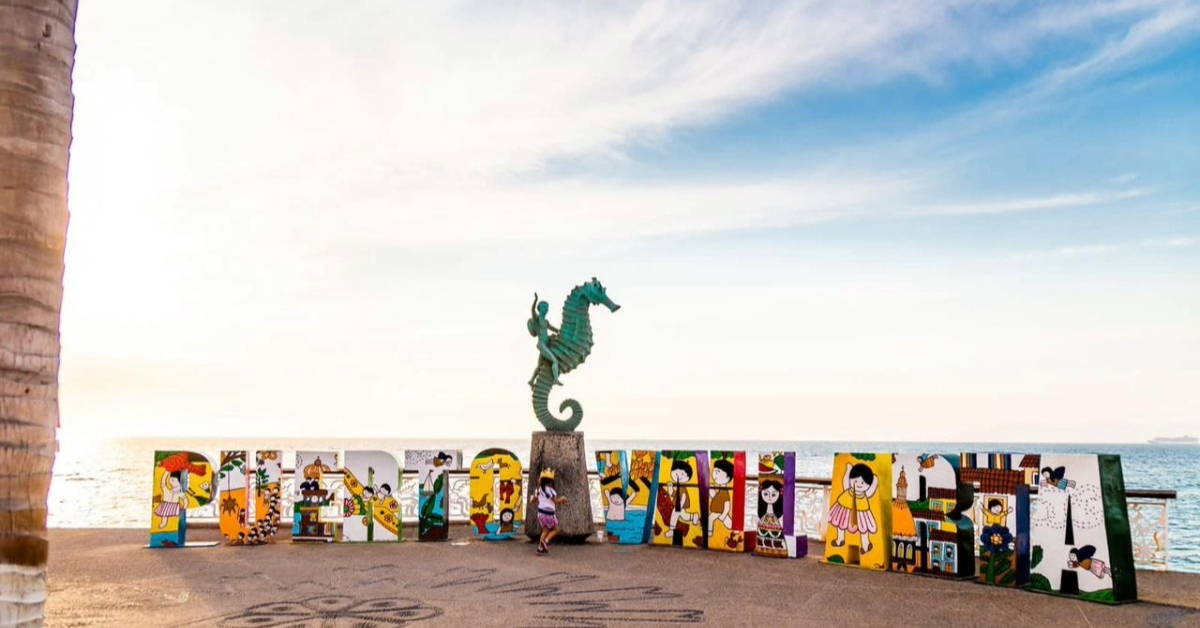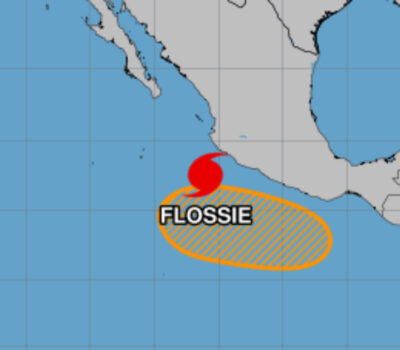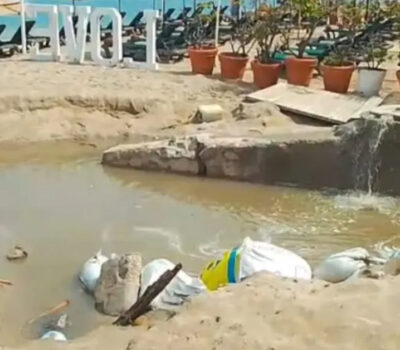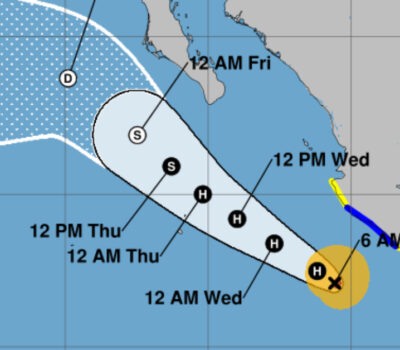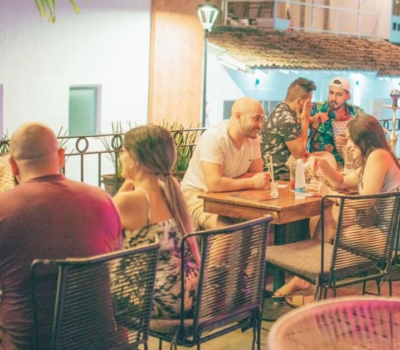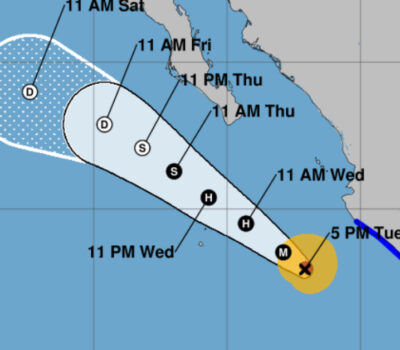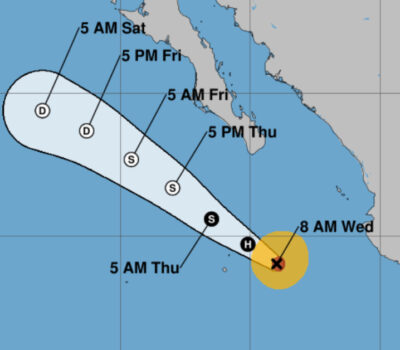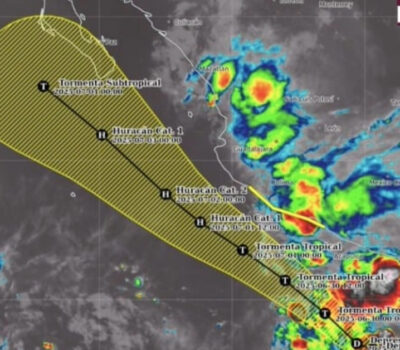Puerto Vallarta, a city once known for its quaint charm and genuine hospitality, has seen a dramatic transformation over the past few decades. Tourism has exploded, with foreign visitors arriving in waves to experience sun-drenched beaches, lively boardwalks, and vibrant culture. Yet along the way, something has shifted. What was once a humble fishing village with a strong sense of local community now often feels dominated by large developments and high-end tourism-oriented businesses. These establishments cater to the comfort of foreign tourists and expatriate residents who have settled here, often to retire or to invest in real estate. As Puerto Vallarta continues to evolve, the recent implementation of a new tax on foreign visitors—around eight U.S. dollars per traveler over sixteen—represents an opportunity to consider who benefits from tourism revenue and whether the local people, who sustain Puerto Vallarta’s character and economy, are being left behind.
For years, Puerto Vallarta’s attraction has been the oceanfront Malecón, the picturesque Old Town, and a uniquely charming mix of cobblestone streets and modern comforts. Foreign visitors come for a slice of paradise. Many settle, seeking a more affordable lifestyle than they might enjoy at home, while locals typically fill service industry positions in hotels, resorts, and tour companies. While it’s true that tourism can create jobs—many of which would not exist otherwise—wages in these positions can be low, with working conditions that hinge heavily on the ebbs and flows of seasonal demand. The city has seen a rapid increase in the cost of living as real estate prices skyrocket, driven in part by foreigners who can afford to pay higher purchase and rental costs. The result is that many Puerto Vallarta locals are effectively priced out of their own neighborhoods, witnessing gentrification that pushes them further from the city center.
The new tax on foreign visitors has been justified as a measure to “improve the offerings for tourists.” This rationale suggests that the funds will be used to enhance infrastructure primarily catering to tourist comfort: possibly more development in resort zones, beautification campaigns along the Malecón, marketing efforts that further promote Puerto Vallarta on the world stage, or expansions in tourist-centered amenities. Indeed, Puerto Vallarta’s officials likely wish to ensure that high-paying foreign visitors get an increasingly polished experience, thus perpetuating what seems like a virtuous cycle for tourism dollars—but only if one looks at the equation from the vantage point of the tourism industry alone. Yet there is an inherent contradiction here. The city already charges a lodging tax, the stated purpose of which is to invest in infrastructure and services. If existing lodging taxes are genuinely used for that purpose, why is an additional fee needed—and why must it, too, funnel directly back into an industry that already reaps major benefits?
To be clear, tourism is not inherently detrimental. The wealth that visitors bring can contribute to building roads, renovating schools, improving healthcare, and maintaining public spaces—if allocated properly. Unfortunately, the pattern we often see in tourist hotspots is that tax revenue gets reinvested disproportionately in amenities that favor tourists and foreign residents rather than local communities. Premium entertainment venues, hotel-lined beach expansions, or major urban development projects often receive priority. Meanwhile, local social services, education, environmental protection in residential areas, and infrastructure in neighborhoods where long-time residents live continue to receive secondary, if any, attention.
How Tourism Displaces Locals
The question of how tourism can displace locals is multifaceted. First, there is the issue of real estate. Puerto Vallarta’s scenic beauty and allure for foreigners seeking a “tropical escape” make it a prime market for vacation homes and retirement living. High-income foreign buyers frequently purchase condominiums or villas at prices that dwarf local wages, driving housing costs upward. In centrally located areas like the Romantic Zone or near the Malecón, what once might have been modest family homes are sold or transformed into rental properties targeting the lucrative short-term vacation market. This process, known as gentrification, can raise property taxes, rental prices, and overall living expenses, making it challenging for local families to remain in their communities.
Second, labor dynamics shift as the market responds to tourist demands. Jobs in restaurants, hotels, and tourism services proliferate, but these positions often pay modest wages, rely on tips, and are subject to seasonal fluctuations. Workers may face job insecurity during the low season when fewer travelers visit. The combination of low local wages and high living costs can trap locals in a cycle of poverty or force them to leave in search of better opportunities elsewhere. The apparent prosperity seen in glossy brochures and Instagram posts does not necessarily filter down to the average resident who struggles with daily living expenses.
Third, the changes in local culture cannot be ignored. As foreign influence grows, there may be a subtle shift away from traditional Mexican customs, celebrations, and communal practices. Cultural events might be commercialized or curated for visitor consumption, meaning that what remains “authentic” is often what best serves tourist expectations rather than local expressions of identity. Locals might feel pressured to align their cultural practices with what sells, risking a dilution of genuine traditions.
The Burden of New Taxes
The new $8 visitor tax is presumably a step to offset these strains. Tourism officials and local government leaders point out that tourists use roads, public utilities, and other resources, so a tax can help ensure that foreigners pay their share. However, the rhetoric around how these funds will be used is critical. If the underlying premise is to continue investing in ways to “improve the offerings for tourists,” it suggests that the revenue will be channeled into yet more visitor-oriented developments. Critics argue that Puerto Vallarta is already overdeveloped for tourism, with certain areas suffering from congestion, high property prices, and a weakened sense of local community. Meanwhile, neighborhoods where most locals reside see fewer upgrades. Schools lack adequate funding, public hospitals may suffer from staffing shortages, and utilities might remain outdated or unreliable.
Where, then, should a new tax on foreign visitors go? The suggestion here is that it should directly serve the community, especially those whose livelihoods and living conditions have worsened with the tourism boom. Whether by building and upgrading public schools, improving local transportation, expanding social welfare programs, or investing in vocational training and small-business development, the new tax could be a powerful tool for genuine progress. By allocating funds explicitly for local improvements, the government can showcase a commitment to its own citizens—ensuring that Puerto Vallarta remains a city belonging to Mexicans first, rather than a mere playground for foreign visitors.
Putting Local Welfare First
For decades, some local residents have raised concerns about the deepening disparity between tourist enclaves and the peripheral or inland neighborhoods where many working families reside. Those concerns include lack of adequate street lighting, uneven pavement, and insufficient public transportation. Many schools struggle to keep up with rising enrollment; often, teachers operate without enough resources, such as computers, books, or classroom space. A percentage of tourism revenue—perhaps mandated through city ordinances—could be earmarked solely for public education improvements, ensuring that young people have the chance to benefit from modern technology and well-funded learning environments.
Healthcare is another area desperately needing reinvestment. While private hospitals in Puerto Vallarta cater to affluent travelers looking for medical tourism or quick treatments, the public healthcare system cannot always keep pace with the city’s growing population. With foreigners driving up the cost of living, some locals struggle to pay for private care. Directing the visitor tax into public hospitals and clinics could vastly improve the quality and availability of healthcare services for residents. Such a move would not only help address the daily healthcare needs of people who are vital to Puerto Vallarta’s tourism engine but also mitigate the sense of resentment or marginalization that can arise when wealthy newcomers are afforded better medical options.
Additionally, improved public transportation could substantially benefit local communities, who often rely on buses or outdated routes to get to work. As tourist traffic and associated congestion grow, better, more modern transportation systems become a necessity. New bus lines and schedules to service residential neighborhoods in the outskirts could open up job opportunities for locals who live far from tourist zones, making it easier and more affordable to earn a living. Cleaner, more efficient modes of transportation would also benefit the city’s environment, cutting down on pollution that affects both tourists and residents alike.
Addressing Poverty and Income Inequality
Puerto Vallarta’s economy is heavily dependent on tourism, which creates a precarious situation when the broader economic environment shifts. The city’s success hinges on external factors such as global financial health, currency exchange rates, and global travel trends. When tourism suffers—due to recession, pandemics, natural disasters, or competition from other destinations—residents who rely on these industries for income are left vulnerable. A tax that is allocated to help the people could serve as a buffer. For instance, a portion of the tax revenue could go toward establishing social programs that offer direct assistance when the tourism sector sees a downturn, such as job retraining or short-term financial assistance.
Moreover, one of the core challenges in Puerto Vallarta is educational and economic inequality. Creating vocational training programs with tax proceeds could empower locals to pursue better-paying jobs, whether in or out of the tourism sector. The city could invest in technical institutes that focus on teaching computer skills, hospitality management with a focus on fair labor practices, or even entrepreneurial guidance. By diversifying the skill sets of residents, Puerto Vallarta can lessen its dependence on tourism—something beneficial not only for the city’s economy but also for local empowerment and resilience.
Environmental Stewardship and Sustainability
One of the more pressing concerns is the environmental toll of unchecked tourism development, including damage to beaches, marine life, and local ecosystems. Poorly regulated construction can lead to erosion, waste management issues, and pollution. To remain a desirable destination in the long run, Puerto Vallarta must address these challenges proactively. Allocating a portion of the visitor tax to environmental conservation projects—like beach cleanups, marine wildlife protection, or sustainable development plans—helps safeguard the natural beauty that draws tourists in the first place. It also respects the ecological integrity of the region, which ultimately benefits local communities who rely on fishing or other nature-based livelihoods.
For instance, those living in small fishing communities on the outskirts of Puerto Vallarta could be granted resources to transition to more sustainable fishing practices or to explore alternate forms of employment that do not degrade the environment. Ensuring clean water, managing waste responsibly, and protecting local habitats from the sprawl of mega-resorts would yield immediate benefits for both locals and visitors, and could extend the destination’s appeal far into the future.
Resisting the Allure of Exclusivity
A key tension in places that become dependent on high-end tourism is the temptation to become more exclusive. Luxury resorts, upscale restaurants, and private beaches can lock out locals, further insulating wealthy foreigners from the everyday realities of the region. This separation not only erodes cultural exchange but also fosters resentment among residents who see their homeland morphing into a space that primarily serves outsiders. The new tax, if it merely fuels more exclusive developments, could exacerbate social divides.
Instead, Puerto Vallarta’s leadership should prioritize inclusive models of tourism that center around cultural exchange, local entrepreneurship, and sustainability. For example, supporting community-based tourism would direct money straight into the hands of local families. Neighborhood-run tours, home-cooked meal experiences, and artisan workshops would showcase authentic Mexican culture and simultaneously create economic opportunities for residents. By promoting these kinds of experiences—and using a portion of the foreign visitor tax to market and improve them—Puerto Vallarta could position itself as a more equitable destination, distinguishing itself from other resort-centric beach towns.
Breaking the Cycle of “Tourist First” Investments
Too often, municipal policies mirror a “tourist first” mentality, which can translate into amenities that cater to visitors while leaving many residents underserved. Infrastructure improvements near major resorts or in high-traffic areas do make sense from a purely economic perspective, as they enhance the experience for those who bring in the largest profits. However, it is crucial to examine the moral and social implications of this dynamic. A thriving city is one where the local population can also walk on safe sidewalks, enjoy well-maintained public squares, access public libraries, and travel on reliable public transportation.
To break away from this cycle, local government could implement a transparent budgeting process that ensures equitable distribution of tax revenue. Detailed, publicly available records would allow residents to see precisely how these tourist taxes are being spent. This kind of accountability could reduce corruption, build trust, and ensure that funds actually reach the intended projects. Whether it’s a new hospital wing, improvements to public schools, or environmental cleanup initiatives, locals would have tangible evidence of the tax dollars at work. Such clarity could also encourage a sense of shared ownership, uniting locals and visitors in a common goal of supporting Puerto Vallarta’s social and environmental well-being.
Uplifting Education and Youth
Few investments yield as high a return for a community as education. By using foreign tourist taxes to invigorate local schools, Puerto Vallarta can lay the groundwork for a future generation that is well-prepared and skilled in a variety of fields. Tourism, while lucrative, should not be the only career path available for young people. The influx of wealthier foreigners might give the impression that service industry jobs are the key to prosperity, but real stability comes from having multiple industries and skill sets within the population.
Imagine a scenario where local high school students have modern computer labs, workshops for creative industries, and robust mentorship opportunities. Partnerships with local businesses could provide internships, ensuring students graduate with a strong network and practical experience. Scholarships could support promising students from low-income families, breaking cycles of poverty and creating upward mobility. If this tax is truly meant to “improve offerings,” there is no greater offering than a bright future for Puerto Vallarta’s youth.
Fostering a Balanced Coexistence
It’s essential to remember that not all foreigners are wealthy, nor do all visitors come with the intention of exploiting local resources. Many retirees in Puerto Vallarta are on fixed incomes, and countless visitors are respectful, conscientious travelers. The conversation is less about demonizing individuals and more about recognizing broader economic forces that shape communities. Still, foreign presence does alter local dynamics. A well-structured tax, used ethically, could ensure that at least part of the financial burden and responsibility of preserving Puerto Vallarta’s social fabric falls on those who benefit from living or vacationing in a sought-after destination.
Ideally, visitors themselves, aware of the local challenges, would support such a tax if they see it being spent ethically and transparently. Many travelers are eager to experience local culture and would likely appreciate the idea that their money goes to support the communities that make Puerto Vallarta so captivating. Such an arrangement could encourage more harmonious interactions between locals and visitors, reducing tensions by showing that foreign presence can also bring tangible communal benefits beyond the profits of big businesses and real estate developments.
A Call for Community-Centric Policies
Puerto Vallarta’s newly introduced tax on foreign visitors can be a pivotal moment. If city officials continue funneling tax revenue into tourist-oriented projects, it will likely exacerbate existing inequalities, fueling further displacement of locals from their traditional neighborhoods. But if they seize the opportunity to redistribute funds in a more equitable manner—focusing on public education, healthcare, social services, environmental conservation, and community development—Puerto Vallarta can chart a different course.
This vision demands strong political will. It calls for local leaders unafraid to champion the interests of those who live and work in the city year-round. It also requires a transparent system of accountability, ensuring that tax money reaches genuine community initiatives and is not diverted to opaque developments that only benefit the affluent. By tying the tourist tax directly to measurable improvements in the lives of everyday people, Puerto Vallarta could serve as a shining example for other destinations wrestling with similar issues of inequality and overdevelopment.
Ultimately, Puerto Vallarta is more than a mere vacation spot; it is home to tens of thousands of Mexicans who deserve a decent standard of living and the opportunity to share in the prosperity that tourism can bring. In the scramble to attract foreign dollars and global recognition, the city’s heart—the culture, traditions, and communities that made it special in the first place—must not be forgotten. Rather than expanding what already caters to wealthy tourists and foreign residents, Puerto Vallarta must remember its roots. If a new tax is to be levied on foreign visitors, let it be a pathway toward a more inclusive and balanced future—one where every local child has a well-funded school, every neighborhood has safe roads and public spaces, every house has access to clean water, and the delicate ecosystems are protected so they can be enjoyed by residents and visitors alike.
Puerto Vallarta, a city once known for its quaint charm and genuine hospitality, has seen a dramatic transformation over the past few decades. Tourism . . .

